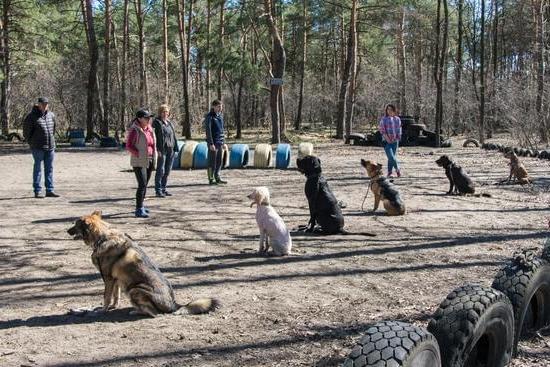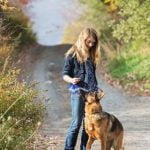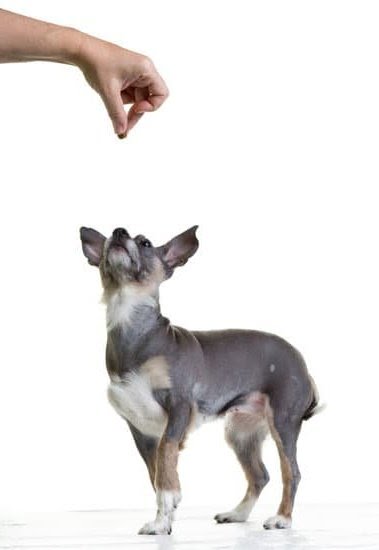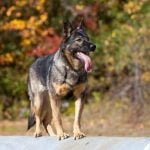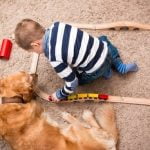Dogs are known for their natural instinct to chew, but sometimes this behavior can become destructive and problematic for pet owners. If you have ever found yourself asking, “how to train my dog to stop chewing stuff up,” then you are not alone. Understanding the reasons behind why dogs chew is essential in addressing and correcting this behavior. From teething puppies to bored adult dogs, there are various factors that contribute to this habit.
Chewing is a normal canine behavior that serves several purposes for dogs, such as relieving stress, soothing gums during teething, and keeping their jaws strong. However, when dogs begin chewing on inappropriate items like furniture, shoes, or even electrical cords, it can lead to frustrations for pet owners. Identifying the root cause of your dog’s chewing habit is crucial in developing an effective training plan to redirect their behavior towards more acceptable alternatives.
By delving into the common reasons why dogs chew and recognizing the consequences of this behavior, pet owners can gain insight into how to address and modify their dog’s habits. From basic training techniques to providing proper chewing toys and establishing a consistent routine, there are effective strategies that can help curb your dog’s destructive chewing tendencies.
With patience, positive reinforcement, and persistence, pet owners can work towards teaching their furry companions appropriate chewing behaviors while strengthening the bond between them.
Common Reasons Why Dogs Chew
Dogs are natural chewers, and chewing is a normal behavior for them. However, excessive chewing can become destructive and frustrating for pet owners. Understanding the reasons why dogs chew can help in effectively addressing this behavior. Here are some common reasons why dogs chew:
- Teething: Just like babies, puppies go through a teething phase where they feel the need to chew on things to relieve discomfort. Providing appropriate chew toys during this time can help redirect their chewing.
- Boredom or Lack of Stimulation: Dogs who are under-stimulated or bored may resort to chewing as a way to entertain themselves. Providing enough physical exercise and mental stimulation can help prevent boredom-related chewing.
- Anxiety or Stress: Dogs may also chew as a coping mechanism for anxiety or stress. Changes in routine, separation anxiety, or other stressful situations can trigger excessive chewing behavior.
To address these common reasons why dogs chew, pet owners must take proactive steps in training their furry companions. Here’s how to train my dog to stop chewing stuff up:
- Identify the triggers: Observe when your dog tends to chew the most and try to identify any patterns or triggers that lead to this behavior.
- Provide appropriate chew toys: Offer a variety of safe and durable chew toys for your dog to redirect their chewing behavior onto proper items.
- Supervise and correct: Keep an eye on your dog when they are prone to chewing and correct them with a firm “no” if they start to nibble on inappropriate objects.
By understanding the reasons behind your dog’s chewing habits and implementing these training techniques consistently, you can effectively reduce or eliminate destructive chewing behavior in your furry friend. Remember that patience, consistency, and positive reinforcement are key elements in successfully training your dog to stop chewing stuff up.
Consequences of Chewing Behavior
Damage to Personal Belongings
One of the most significant consequences of chewing behavior in dogs is the damage it can cause to personal belongings. Whether it’s shoes, furniture, or electronic devices, a dog’s chewing habit can result in expensive repairs or replacements. Not only does this affect your wallet, but it can also lead to frustration and stress for pet owners.
Potential Health Risks
Another consequence of excessive chewing in dogs is the potential health risks it poses to your furry friend. Ingesting foreign objects or toxic substances while chewing on items can lead to digestive issues, blockages, poisoning, or choking hazards. This puts your dog’s well-being at risk and may require emergency veterinary care to address any health concerns that arise.
Behavioral Problems
Chewing behavior can also be indicative of underlying behavioral problems in dogs. It could stem from boredom, anxiety, lack of exercise, or attention-seeking tendencies. If left unchecked, this behavior may escalate into other destructive habits or disobedience. Addressing the root cause of your dog’s chewing behavior is crucial in preventing further issues and promoting a harmonious relationship between you and your pet.
Basic Training Techniques to Stop Chewing
Dogs chew for various reasons, including teething, boredom, anxiety, or simply out of curiosity. To address this behavior and prevent your furry friend from destroying your belongings, it is essential to implement basic training techniques to stop chewing. By understanding the root cause of your dog’s chewing habits and providing appropriate outlets for this natural behavior, you can effectively train them to stop destructive chewing.
Here are some basic training techniques to help you teach your dog not to chew on inappropriate items:
- Supervise your dog: Keep a close eye on your pet and intervene immediately when you catch them in the act of chewing on something they shouldn’t be.
- Redirect their attention: When you catch your dog chewing on something they shouldn’t be, calmly take away the item and replace it with a suitable chew toy or bone.
- Use positive reinforcement: Praise and reward your dog when they chew on their toys instead of household items. This positive reinforcement will help reinforce good behavior.
By consistently implementing these training techniques and providing appropriate chewing toys for your dog, you can effectively teach them how to redirect their chewing habits in a positive way. Remember that patience and persistence are key when training a dog to stop chewing on things they shouldn’t. With time and consistency, you can help curb this behavior and create a well-behaved furry companion.
Providing Proper Chewing Toys and Alternatives
When it comes to training your dog to stop chewing on things they shouldn’t be, providing proper chewing toys and alternatives is essential. Dogs have a natural instinct to chew, so it’s important to redirect this behavior onto appropriate items. By offering your dog suitable toys to chew on, you can help satisfy their urge to gnaw in a way that won’t damage your belongings.
Choosing the Right Chewing Toys
Not all dog toys are created equal when it comes to satisfying your pup’s chewing needs. Look for toys that are durable and designed specifically for chewing. Avoid toys that can easily be torn apart or swallowed, as this can lead to health problems for your furry friend. Consider different textures and materials to see what your dog prefers, whether it’s rubber, nylon, or plush.
Rotate Toys Regularly
To keep your dog engaged with their chewing toys, it’s important to rotate them regularly. Introducing new toys and rotating old ones will prevent your dog from getting bored and seeking out other items to chew on. This variety will not only keep them entertained but also allow you to observe which types of toys they prefer. Remember that every dog is different, so experimentation may be needed to find the perfect chewing toy for your canine companion.
Remember, consistency is key when training your dog how train my dog.to stop chewing stuff.up. By providing them with appropriate chewing toys and alternatives, you can help redirect their natural behavior onto safe items while protecting your belongings from unwanted destruction.
Consistency Is Key
Dogs thrive on routine and structure, so establishing a consistent schedule can greatly help in training them to stop chewing things they shouldn’t. One effective way to do this is by setting regular feeding times for your dog. By feeding them at the same times each day, you can create a predictable routine that can aid in reducing anxiety or boredom, which are common triggers for destructive chewing behavior.
Aside from meal times, it is also important to establish a routine for exercise and playtime. Regular physical activity not only helps in maintaining your dog’s overall health but also provides mental stimulation that can prevent them from resorting to chewing out of boredom. Consider incorporating puzzle toys or interactive games during play sessions to engage your dog’s mind and energy in a productive way.
In addition to feeding and exercise schedules, it is crucial to have a consistent approach towards correcting undesirable chewing behavior. Be firm and clear when redirecting your dog’s attention away from inappropriate items towards their designated chew toys. Consistency in your response will help your dog understand what is expected of them and reinforce the message that chewing on furniture or personal belongings is not acceptable.
| Establishing a Routine | Key Points |
|---|---|
| Regular Feeding Times | Create predictability and reduce anxiety triggered by irregular schedules. |
| Consistent Exercise | Physical activity prevents boredom-related chewing and promotes mental stimulation. |
| Steady Correction | Be firm and consistent in redirecting your dog’s focus towards appropriate chew toys. |
Using Positive Reinforcement in Training
Positive reinforcement is a powerful tool when it comes to training your dog to stop chewing on things they shouldn’t. When your dog chooses to chew on an appropriate toy or bone instead of your shoes or furniture, be sure to praise them and offer a tasty treat as a reward. This positive reinforcement will help reinforce the desired behavior and make them more likely to continue choosing the right items to chew on.
Another way to utilize positive reinforcement is by using clicker training. By pairing the sound of a clicker with treats and praise, you can mark the moment when your dog exhibits the behavior you want, in this case, choosing appropriate chew toys. Clicker training can be an effective way to communicate with your dog and let them know exactly what they are being rewarded for.
It’s important to remember that consistency is key when using positive reinforcement in training your dog how to stop chewing on inappropriate items. Make sure everyone in the household is on the same page and follows the same protocols for rewarding good behavior. By maintaining a consistent approach, your dog will learn faster and be less likely to revert back to their old chewing habits.
Patience and Persistence
Dealing with setbacks when it comes to training your dog to stop chewing on things can be frustrating, but it’s essential to approach these situations with patience and persistence. Remember that changing a behavior takes time and consistency, so don’t get discouraged if your dog has a slip-up. It’s important to stay calm and continue implementing the training techniques you have been using.
One way to address setbacks is by reassessing the environment in which your dog spends its time. Make sure there are no tempting objects within reach that could trigger the chewing behavior. Be proactive in puppy-proofing your home by keeping shoes, clothes, and other items out of sight or reach. Additionally, consider providing more physical and mental stimulation for your dog through daily walks, playtime, and interactive toys to help alleviate boredom or anxiety that may lead to chewing.
Another important aspect of dealing with setbacks is to reinforce positive behaviors consistently. When your dog chooses to chew on appropriate toys instead of inappropriate items, be sure to praise and reward them with treats or verbal cues. This positive reinforcement helps your dog understand what behaviors are desirable and encourages them to continue making the right choices. Remember that consistency in rewarding good behavior is key in effectively training your dog how to stop chewing stuff up.
Seeking Professional Help if Chewing Persists
Chewing behavior is a common issue that many dog owners face, but it is important to address it promptly to prevent damage to your belongings and potential health risks for your furry friend. Understanding why dogs chew is the first step in addressing this behavior. Whether it’s due to teething, boredom, anxiety, or simply exploration, recognizing the root cause can help you effectively tackle the problem.
While there are various reasons why dogs chew, it is essential to be aware of the consequences of this behavior. Chewing on inappropriate items can lead to destruction of furniture, shoes, and other household items.
Additionally, ingesting foreign objects can pose a choking hazard or cause intestinal blockages that may require surgical intervention. By implementing basic training techniques like redirection, providing proper chewing toys and alternatives, establishing a routine, and using positive reinforcement, you can effectively teach your dog what is acceptable to chew on.
However, if despite all efforts and consistency in training your dog continues to exhibit destructive chewing behavior, seeking professional help from a certified animal behaviorist or trainer may be necessary. A professional can assess your dog’s specific needs and design a tailored training plan to address the underlying issues causing the chewing behavior.
Remember that patience and persistence are key in modifying any challenging behavior, so do not be discouraged by setbacks along the way. With dedication and the right guidance, you can successfully train your dog to stop chewing stuff up and create a harmonious living environment for both you and your canine companion.
Frequently Asked Questions
How Do You Discipline Your Dog When They Chewing Up Stuff?
Discipline for a dog chewing up stuff involves redirection, providing appropriate chew toys, and using positive reinforcement when caught in the act of chewing on something they shouldn’t. Consistency and patience are key in training.
What Age Do Dogs Stop Chewing Things Up?
Dogs usually stop chewing things up around 1 to 2 years of age when they have finished teething and their behavior begins to stabilize. However, some dogs may continue this behavior if not properly trained.
How Do I Get My Dog to Stop Chewing Everything When Left Alone?
To prevent your dog from chewing everything when left alone, ensure they have plenty of exercise and mental stimulation before leaving them. Provide interactive toys or puzzles to keep them occupied and distract them from destructive behavior. Gradually increase their time alone to build confidence and reduce anxiety.

Welcome to the blog! I am a professional dog trainer and have been working with dogs for many years. In this blog, I will be discussing various topics related to dog training, including tips, tricks, and advice. I hope you find this information helpful and informative. Thanks for reading!

